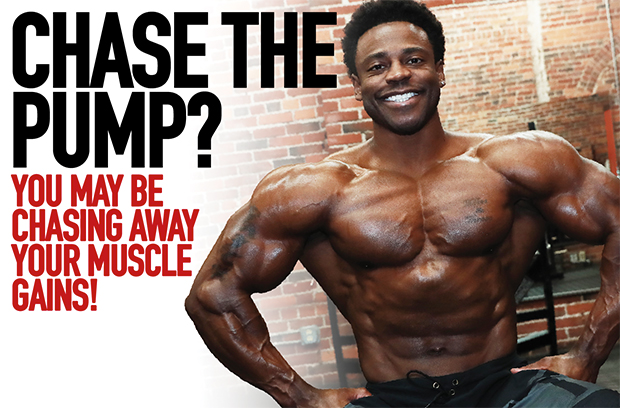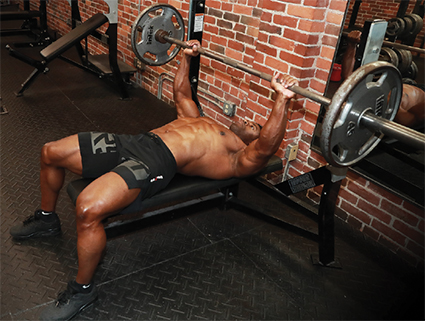Chase the Pump? You May Be Chasing Away Your Muscle Gains!

High-rep training may burn like hell, but is it the best way to evaluate whether a workout is the most effective?
If you were to peruse a common bodybuilding website, you’d discover weekly articles devoted to the stated goal of training entirely for a muscle pump. You know, the one you feel when you’ve done a quadruple drop set at the end of your arm workout, with so much blood forced into the muscle that your skin is about to burst and your arms ready to fall off? Yeah, that one.
It’s heresy to suggest you shouldn’t be training for the pump, right? Well, not exactly, but hear me out. Let’s first acknowledge you don’t get a pump with heavy weight and low-rep training; that approach doesn’t really force maximal fluids into the target muscle. In fact, training aimed at muscle pumps is typically lighter and for higher reps, often with advanced techniques such as drop sets, forced reps, and supersets added on to increase the muscle burn.

There’s nothing inherently wrong with high-rep training until you realize it’s linked to only one of the three mechanisms believed responsible for muscle growth (called muscle hypertrophy). Pump training is effective at building muscle through a mechanism called metabolic stress, the result of anaerobic training (weight training that’s high in intensity and doesn’t utilize oxygen), which leads to an accumulation of metabolites (such as hydrogen ions, inorganic phosphate, and lactate). In turn, that promotes anabolic hormone release, including testosterone, growth hormone, and insulin-like growth factor.
But you probably noticed that the paragraph above mentioned that metabolic stress was one of three mechanisms linked to hypertrophy. That’s right, there are two others, and their influence is thought to be stronger, so if your workouts are arranged primarily to induce a muscle pump, you may well fall very short if your goal is big-time muscle gains.

You shouldn’t be surprised to hear that what’s considered the most important factor—mechanical tension, which is the disruption of the structural integrity of skeletal muscle tissue, causing molecular and cellular responses in muscle and satellite cells—has been shown to be maximized when using loads between your 6- to 12-rep max. Simply put, you should be able to do between just 6 and 12 reps with a weight; if you can do more, it’s too light. If you’re using multi-joint exercises here, give yourself bonus points for their superior effect on hypertrophy.
As you can see, lightweight sets don’t fall into this category. In fact, 6–12RM loads are often referred to as moderate. Sure, a lightweight set causes some degree of mechanical tension, but you’ll have to go heavier if you want to optimize it.
The third factor is muscle damage, which is thought to be prompted by your body’s inflammatory response to resistance training, which can lead to the production of myokines, proteins that help release growth factors necessary for hypertrophy. By adding volume (the number of sets multiplied by the load), which should be dialed up or down depending on your training level, you can incur sufficient muscle damage.
Building a Smarter Workout
While there’s no exact science on building a workout that best prompts muscle hypertrophy, here’s an approach I use when building my own muscle-building workouts:
1. After warming up, choose a basic multi-joint exercise for 3 to 4 sets of 6 to 8 reps, doing a back-off set last. (A back-off set is simply a light-weight final set.)
2. Do additional exercises for the body part from different angles to work the target muscle somewhat differently. Do each exercise for 3 sets of 8 to 10 reps.

3. Finish with higher-rep sets to create a monster muscle pump. Include multiple sets of 12 to 15 reps, which can include drop sets, supersets, multiple forced reps, or any other burn technique you personally favour. Here’s where it’s the most painful, so you have to dig deep. Save it for last because it will compromise your ability to use heavier weights on succeeding sets.
Everybody likes to finish a workout with a tremendous pump, yours truly included. But that shouldn’t be your primary consideration till later in your workout, after you’ve handled some moderately heavy weights. Pump-focused workouts can also be good when used on occasion, but don’t forget the other important considerations to ensure you build the biggest muscle possible.


